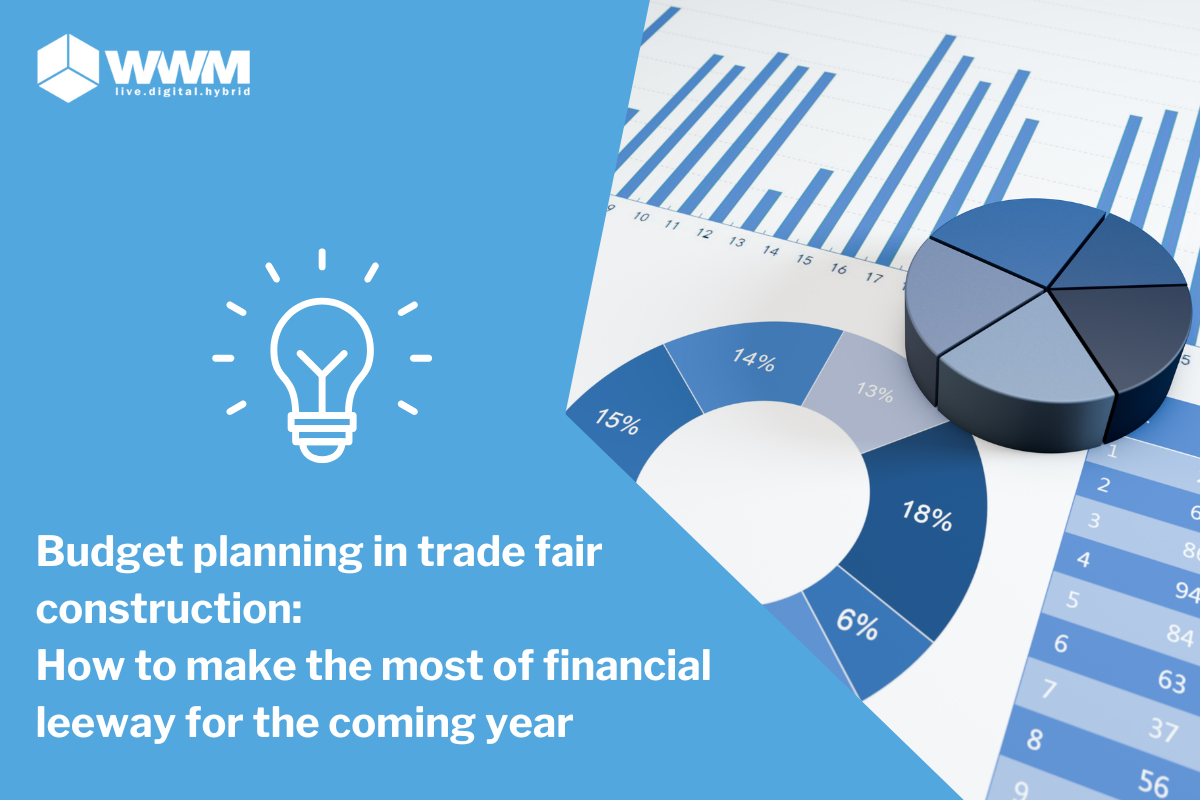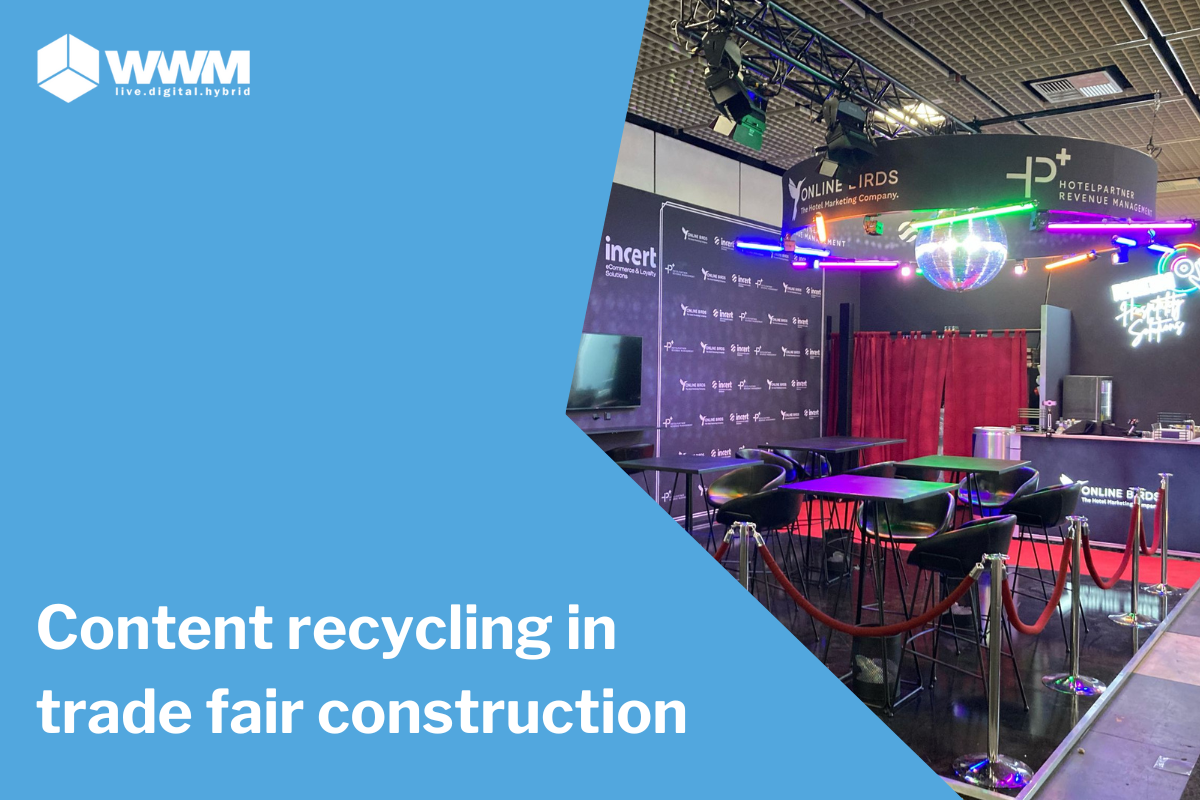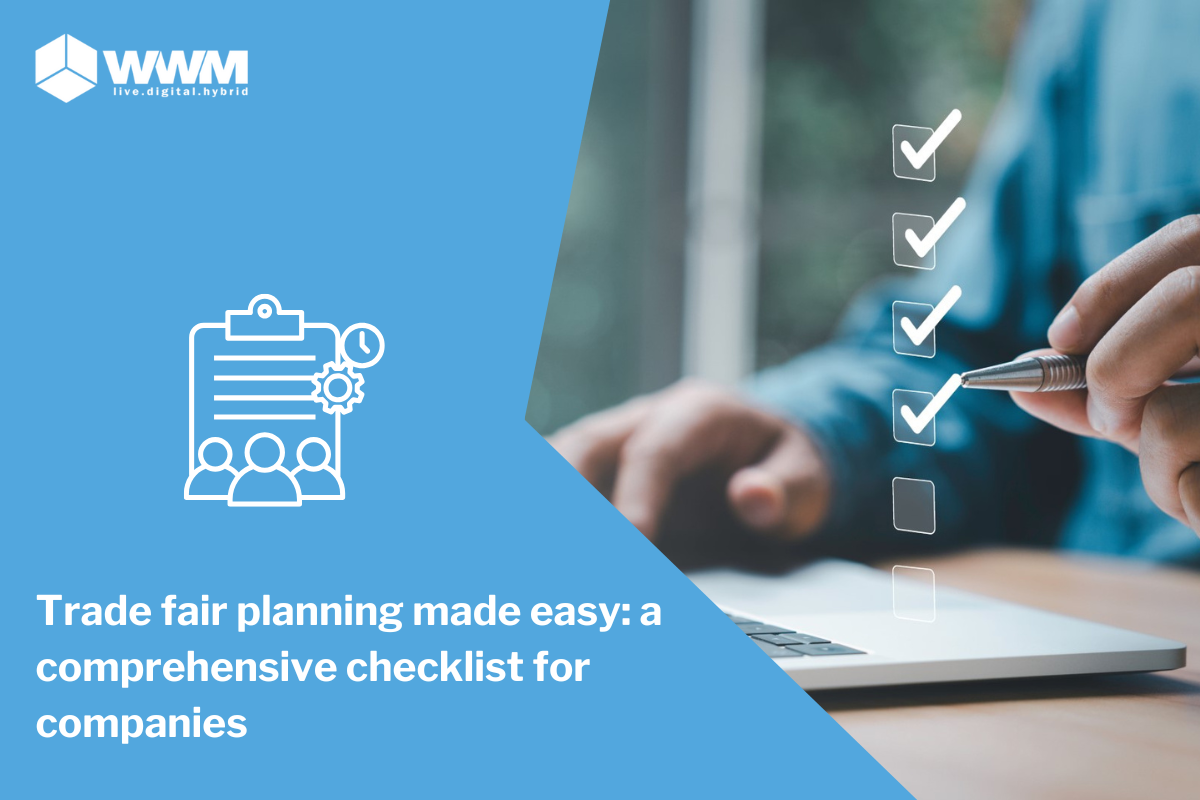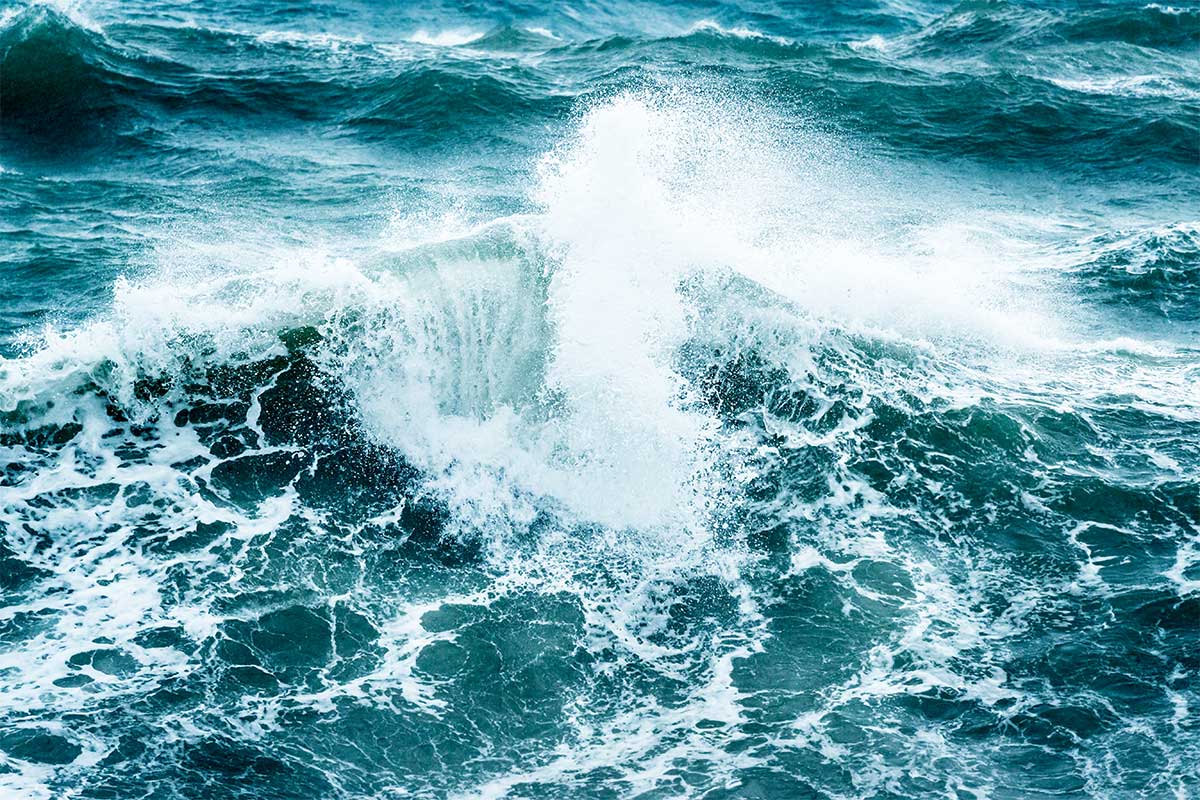Content recycling in trade fair construction
Trade fairs are an excellent platform for presenting your company and your products in the right light. However, every trade fair participation also...
4 min read
 René Meures
:
Friday, 27. December 2024
René Meures
:
Friday, 27. December 2024

Participation in trade fairs is an indispensable part of the marketing strategy of many companies. However, careful budget planning is essential to ensure that your trade fair presence achieves the desired success. This not only ensures transparency and control, but also helps to make efficient use of financial leeway. An often overlooked aspect: residual budgets from the current year can be used strategically to plan with suppliers at an early stage and thus secure advantages for the coming year.
In this blog post, we show you how you can optimize your budget planning in trade fair construction and make clever use of unused funds.
In exhibition stand construction, the financial outlay can quickly mount up. Whether stand construction, logistics, personnel or advertising materials - each area requires precise planning in order to stay within budget and achieve the desired results at the same time. A well-thought-out budget not only provides clarity on all costs incurred, but also the opportunity to make strategic decisions. By setting the right priorities and minimizing potential financial risks in advance, you ensure that your trade fair participation is both effective and cost-efficient.
Sound planning helps you to do this:
Careful budget planning not only gives you a better overview of your resources, but can also reduce costs in the long term and increase the efficiency of your trade fair appearances. A well-thought-out plan not only creates transparency, but also gives you the flexibility to make important decisions in good time.
An often underestimated but extremely important aspect of budget planning in trade fair construction is the targeted use of financial leeway. The residual budgets that remain towards the end of the year represent a valuable resource that you can use strategically to make your trade fair appearances more cost-effective and efficient in the coming year.
This allows you to make effective use of residual budgets and financial leeway:
The targeted use of residual budgets and the choice of sustainable, flexible solutions help to make your trade fair appearances effective and of high quality, even with a limited budget. By entering into long-term partnerships with suppliers and making your trade fair infrastructure flexible and reusable, you can benefit from significant savings in the years to come.
The implementation of efficient budget planning in trade fair construction requires not only the consideration of the main cost factors, but also the application of best practices that will help you to optimize your budget and make your trade fair participation more successful.
You should consider the following best practices when planning your budget:
By integrating these best practices into your budget planning, you can ensure that your trade fair participation remains both high-quality and cost-efficient. Smart prioritization, setting buffer zones and using experience from previous projects are crucial for the success of your trade fair appearances..
Budget planning in trade fair construction is a decisive factor for the success of your trade fair appearance. By making targeted use of financial leeway and implementing sustainable, flexible solutions, you can not only save costs but also maximize your ROI. Remember: every euro you invest wisely today will pay off tomorrow - whether through savings or greater visibility at the trade fair.
Start planning for next year today and secure your competitive advantage at the most important industry events!

Trade fairs are an excellent platform for presenting your company and your products in the right light. However, every trade fair participation also...

Trade fairs offer companies a first-class opportunity to present products and services, acquire new customers and make valuable business contacts....

Are we currently in the midst of a stormy autumn storm? We are noticing it in all areas of life: everything is getting more expensive. To be more...